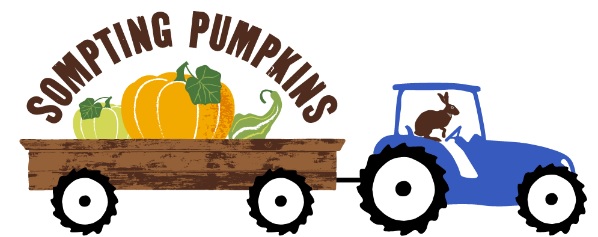Our Farms, on Sompting Estate
The map at the foot of this page shows where each farm is.After reading about our farms below, click this link to read about how we farm with nature.
Titch Hill Farm (includes the former Upton Farm & Church Farm)
This farm is on the west side of the Estate, north of the A27 up Lambleys Lane (so named because it leads to some pastures on Upton Down called Lambs’ Leys). It includes the downland which can be seen from the village, west and north of St Mary’s Sompting church. In the years up to 2000 it was still a mixed farm, with some cattle and mostly arable crops such as winter wheat, but only small numbers of sheep (Mrs Coleman’s prize Southdowns flock, which is still on the Estate).The farm is now managed by the Estate's own team, based from the Estate Office in Middle Yard Barn on Lambleys Lane. Our Farm Manager Mark Heritage is aptly named as he was himself raised on the farm. He is introducing new regenerative farming rotations and techniques. Our livestock man Philip Bower has been carefully breeding and selecting his flock of Texel sheep here since 2000. We also have, since 2023, a herd of pedigree Sussex Cattle, the ancestral breed for this area. They are lovely red-brown, fairly small and hardy cattle which can be out on pasture all year, with a gentle temperament.Our farm secretary Claire Bower supports the team with all the essential admin. We have enhanced the habitat for ground-nesting farmland birds such as grey partridge, lapwing, and corn bunting. The farm's patchwork landscape, with permanent grass, arable and leys, and small woods and hedgerows, is great for wildlife.Titch Hill was our oldest farm in the high downs. The farmhouse was built in 1761 and later enlarged; we will offer farmhouse B&B there from summer 2023. The farm has several small woodlands: Titch Hill Wood or 'The Mountain', just south of the farmhouse, was planted by the Estate in the late 19th century, mainly with beech and larch. After it was severely damaged in the 1987 Great Storm, some replanting was done but it became overrun with Sycamore which, while good for firewood, does not offer much to wildlife. Since 2000 the Estate has refreshed the woodland planting to include 10 coppice coupes (each half hazel), with glades and forestry paths in between. We have gradually been planting more trees to expand the woodland area on this farm.Titch Hill Farm is now growing grapes in vineyards and we are making them into Sompting Estate wines.The former Church Farm, south of the A27, is now also part of Titch Hill Farm. It has arable ground in a central area south of the West Street houses; the lower lying ground to the east and west is used mainly for grazing and hay, and includes our Community Farm the 'Fen Farm' in collaboration with Sustainable Sussex on the east side. To the south down by the railway, cattle grazing gives the best meadow conservation management. The eastern and southern pastures are designated as Cokeham Brooks Local Wildlife Site. In 2019, the EPIC project, a partnership between the Estate and the Ouse and Adur Rivers Trust, created a new stream course across this farmland, the Sompting Brooks Walk.
Lychpole Farm
is in the north east of the Estate and Parish. It includes the Beggars Bush car park and picnic area with superb views and walks. In the decade up to 2000, following decades of government intensification policies, Lychpole was just growing winter wheat. Since then, farmers Caroline and David Harriott have successfully reestablished a more traditional mixed farming system to raise and feed thousands of sheep and cattle. In this system, a variety of rotational arable crops such as spring barley, turnips, fodder beet and grass leys, are grown in a patchwork around some permanent grassland. The farming is more sustainable, the soil is healthier, and the landscape is altogether more hospitable as a wildlife habitat. Other conservation work on Lychpole has included dewpond restoration, scrub clearance to favour the unique species-rich chalk grassland of the downs, renovation of overgrown hedgerows full of dead elms, and new hedge planting. Lychpole Farm is also home to Sompting Pumpkins: open 8th - 30th Oct 2022Yew Tree Farmnow consists of the small area called Malthouse Field, also known as Sompting Paddocks, bounded by the A27, West Street, Church Lane and Dankton Lane. Since the closure of the Croft Meadows / Sompting Paddocks business, this land has variously been grazed by horses and sheep. The Estate has sometimes made it available in the past for community rural events such as agricultural shows or Donkey Derbys, and we may do so again in the future.
open 8th - 30th Oct 2022Yew Tree Farmnow consists of the small area called Malthouse Field, also known as Sompting Paddocks, bounded by the A27, West Street, Church Lane and Dankton Lane. Since the closure of the Croft Meadows / Sompting Paddocks business, this land has variously been grazed by horses and sheep. The Estate has sometimes made it available in the past for community rural events such as agricultural shows or Donkey Derbys, and we may do so again in the future.Traditional Farm Buildings
At the end of the 20th century, the Estate's remaining traditional flint buildings were crumbling. The Estate has restored Lychpole’s historic farmhouse and (with help from Natural England) traditional barns.